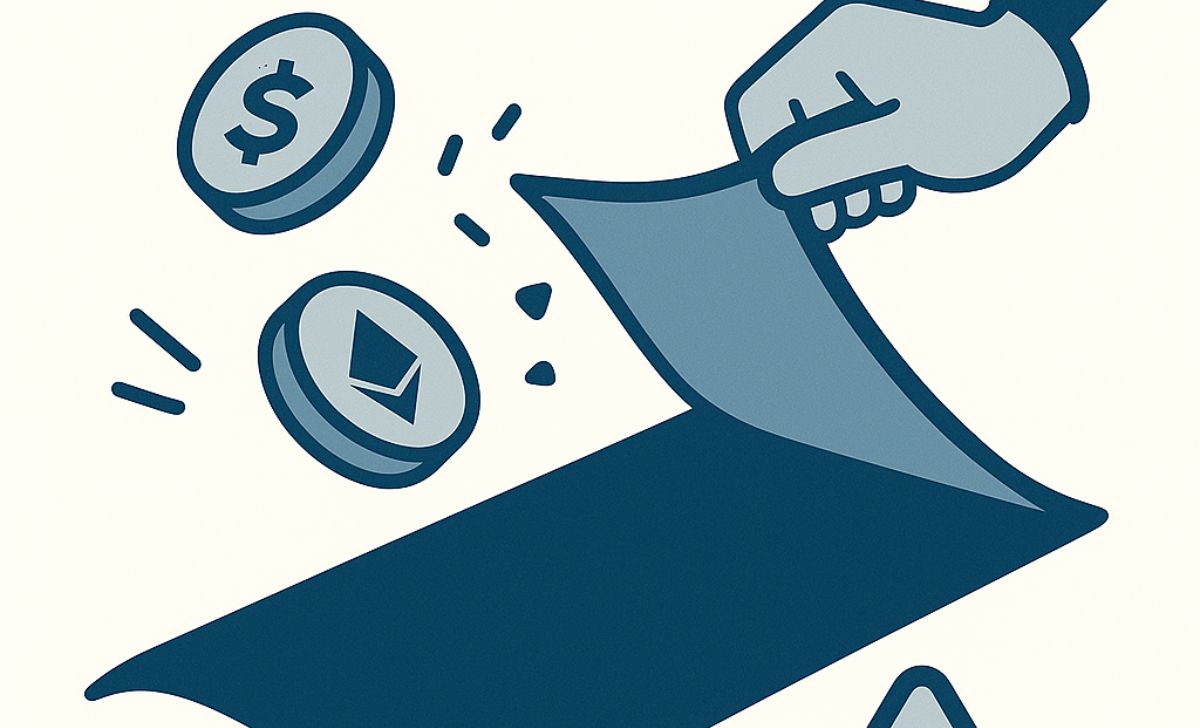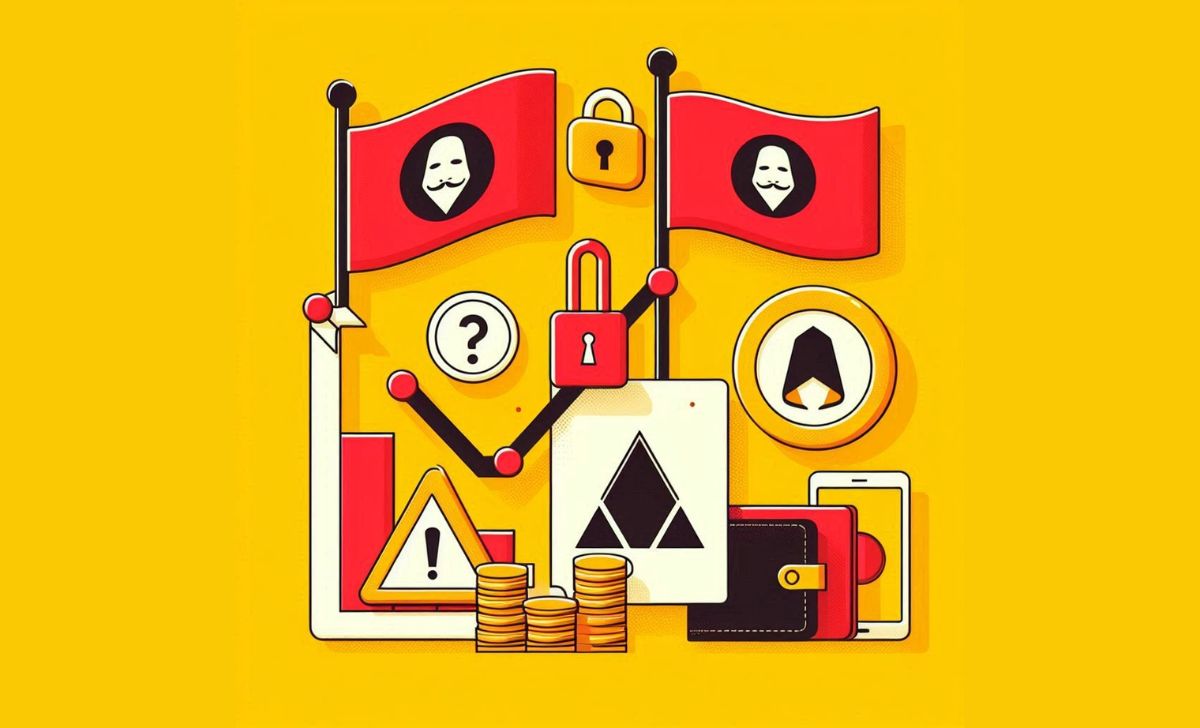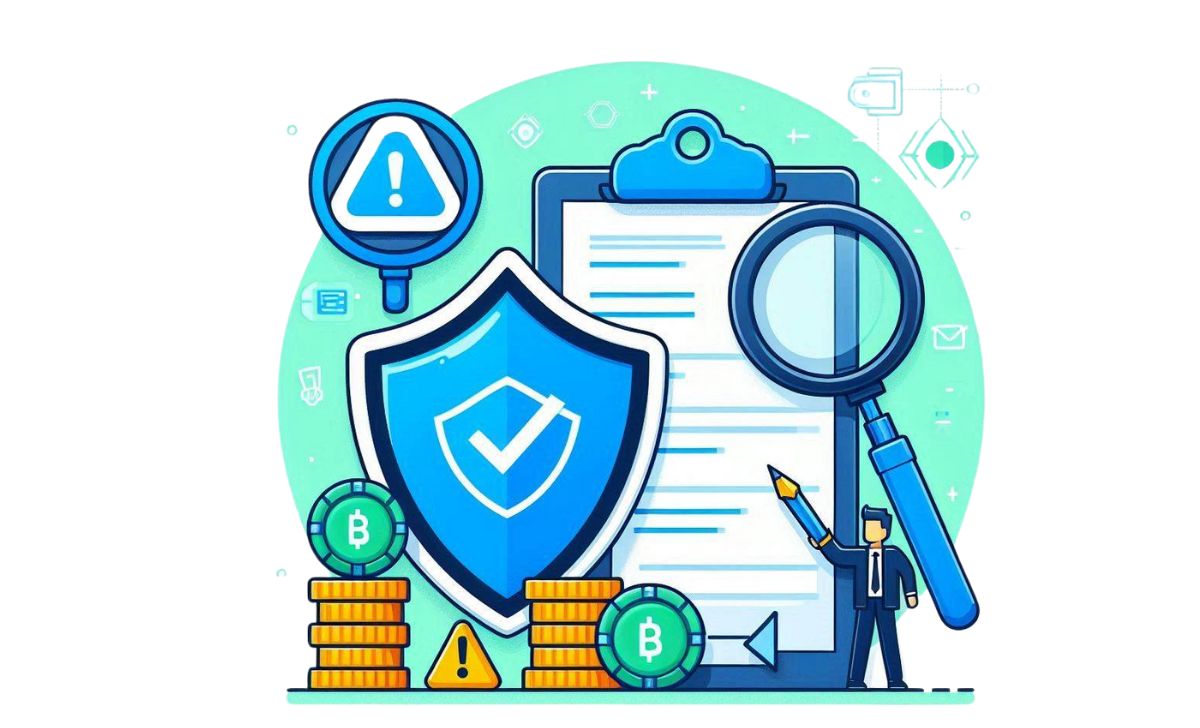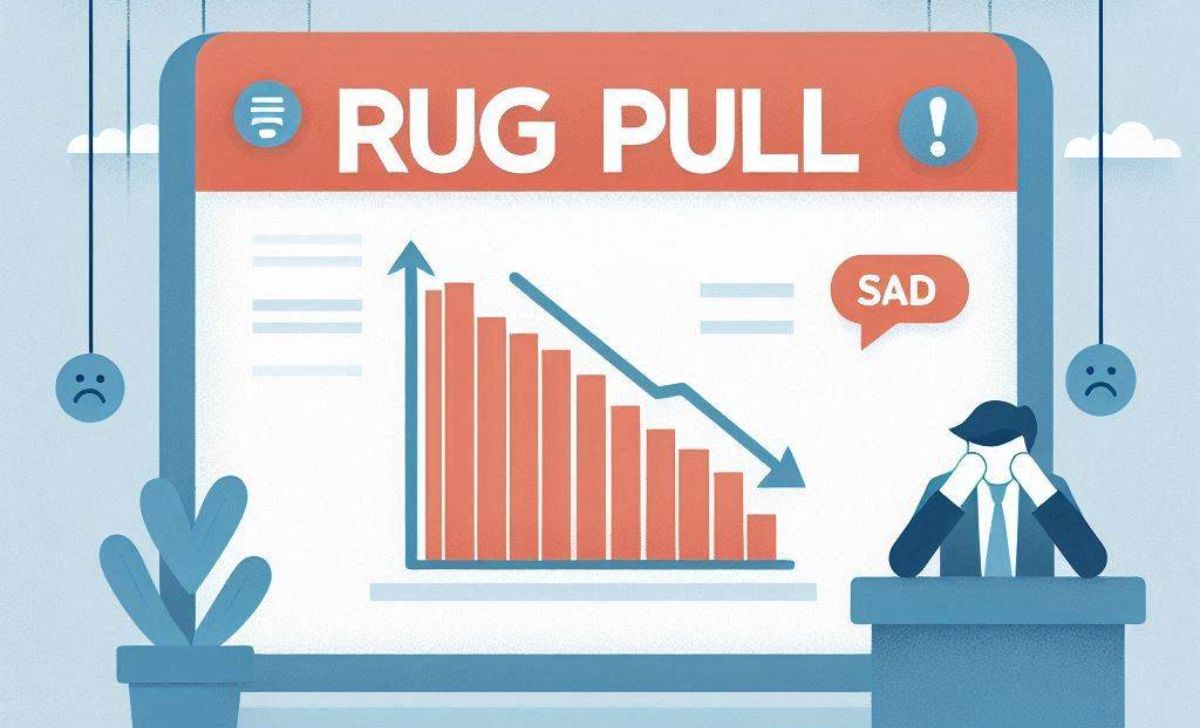Rug Pull is a common scam in the cryptocurrency space, where project developers suddenly withdraw all liquidity or assets, causing investors to lose their entire capital in a short period. Rug pulls often occur in DeFi projects, new tokens, or NFTs, with warning signs such as unusually high promised returns, lack of transparent code, short-term liquidity locks, and anonymous teams.
This article will clearly explain the concept of rug pull, highlight warning signs, provide prevention tips, and analyze real-world examples that have shaken the market. If you want to protect your assets and identify scam projects early, don’t miss the in-depth analysis from TOPCOIN9 below.
Definition of Rug Pull

A rug pull is a type of crypto scam where project developers withdraw all liquidity or funds from a project and abandon it, leaving investors with worthless tokens or coins (Wikipedia, 2016; Bitpanda, 2025). Rug pulls are most common in decentralized finance (DeFi) and new cryptocurrency projects, often involving anonymous teams and promises of high returns (Bitpanda, 2025).
There are two main types: hard pulls, where all funds are taken at once and soft pulls, where funds are siphoned off gradually before the project is abandoned (Bitpanda, 2025). Rug pulls are among the most damaging scams in crypto, eroding investor trust and causing significant financial losses (Wikipedia, 2016; Bitpanda, 2025).
Now that you understand what a rug pull is in the crypto space, let’s examine the common signs that can help you identify such scams early.
Signs of a Rug Pull

Recognizing the warning signs of a rug pull is essential for protecting your investments in the crypto space. Key indicators include:
- Anonymous or unverifiable project teams (Binance, 2025; Wikipedia, 2016)
- Lack of transparency in project information and development (Binance, 2025)
- Unrealistic promises of high returns (Binance, 2025; AdGuard, 2025)
- Smart contracts that are unaudited or unverified (AdGuard, 2025; ECOS, 2025)
- Vague, missing, or plagiarized whitepapers and roadmaps (AdGuard, 2025)
- Poorly designed or copied websites (AdGuard, 2025)
- Liquidity that is not locked or only locked for a very short period (Binance, 2025; AdGuard, 2025)
- Restrictions on selling or transferring tokens (Binance, 2025)
- Sudden changes in tokenomics or project structure (AdGuard, 2025)
- Weak, inactive, or bot-filled communities and fake social media profiles (Binance, 2025; ECOS, 2025)
- Abnormal trading volumes and suspicious price movements (Binance, 2025; ECOS, 2025)
After recognizing the warning signs, it’s important to learn about effective strategies and best practices to prevent falling victim to a rug pull.
Prevention of Rug Pull

Preventing rug pulls requires a proactive approach, combining thorough research, risk management, and the use of trusted platforms and tools (ECOS, 2025; AdGuard, 2025; Flipster, 2025). Always consider investing in the best stablecoin options to minimize risk and ensure portfolio stability.
- Conduct in-depth research: Always verify the project’s whitepaper, objectives, and team credentials. Look for transparent, verifiable profiles and active, authentic community engagement (AdGuard, 2025; Flipster, 2025).
- Prioritize audited projects: Choose tokens and protocols that have undergone third-party smart contract audits by reputable firms, and review audit reports for any critical warnings (AdGuard, 2025; ECOS, 2025).
- Diversify investments: Avoid putting all your funds into a single project; spreading investments across multiple vetted assets reduces exposure to individual scams (ECOS, 2025; AdGuard, 2025).
- Use reputable platforms: Trade on well-known, regulated exchanges with strict listing standards and robust security policies to minimize the risk of encountering fraudulent tokens (ECOS, 2025; Flipster, 2025).
- Start small and scale up: Begin with smaller investments before committing larger amounts, especially with new or unproven projects (ECOS, 2025). If you plan to buy crypto, starting small helps manage risk effectively.
- Monitor liquidity and contract controls: Check that project liquidity is locked for a reasonable period and that developers have renounced unnecessary contract privileges (ECOS, 2025).
- Stay informed: Follow scam trackers, security sites, and crypto news sources to keep up with emerging threats and community alerts (Flipster, 2025).
- Secure your assets: Store significant holdings in cold wallets or multisig solutions, not just on exchanges (ECOS, 2025).
By applying these best practices, investors can significantly lower their risk and navigate the crypto market with greater confidence and security (ECOS, 2025; AdGuard, 2025; Flipster, 2025).
With these prevention methods in mind, let’s look at some real-world examples to see how rug pulls have occurred and what lessons can be learned.
Examples of Rug Pull

Several high-profile rug pulls have caused major losses in the crypto sector, serving as cautionary tales for investors (Wikipedia, 2016; Bitpanda, 2025; Securities.io, 2025):
- OneCoin: One of the largest crypto scams, OneCoin raised over $4 billion by promising high returns and legitimacy. The founder disappeared in 2017, leaving investors with worthless assets (Wikipedia, 2018; Bitpanda, 2025; Securities.io, 2025).
- Thodex: This Turkish crypto exchange vanished in 2021 with over $2 billion in user funds. Authorities later arrested the founder, but most investors never recovered their money (Bitpanda, 2025; Securities.io, 2025).
- AnubisDAO: Raised $60 million in ETH, then abruptly transferred all funds to a different address within 24 hours of launch, crashing the token’s value to zero (Securities.io, 2025).
- Squid Game Token ($SQUID): Launched in 2021, this token soared in value before developers blocked selling and drained liquidity, resulting in millions in losses for investors (Wikipedia, 2025; Bitpanda, 2025; Securities.io, 2025).
- Froggy Coin: In 2024, developers hyped this meme token, then suddenly drained liquidity, leaving investors unable to sell and the token’s value worthless (Cointelegraph, 2024).
These cases highlight the importance of due diligence and vigilance when investing in new or unverified crypto projects (Bitpanda, 2025; Wikipedia, 2016).
Rug pulls remain one of the most damaging threats in crypto, causing major financial losses and eroding trust in decentralized projects. By understanding the warning signs and taking preventive steps, investors can better protect themselves from these scams. For more expert advice and the latest updates on crypto safety, follow TOPCOIN9.

As a certified blockchain security expert with over 8 years in cybersecurity, James Anderson specializes in auditing smart contracts and identifying vulnerabilities in DeFi protocols. His expertise ensures that TopCoin9 delivers reliable insights on blockchain security and risk management.
Email: [email protected]












